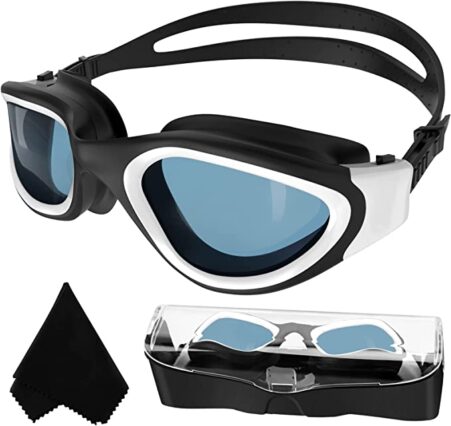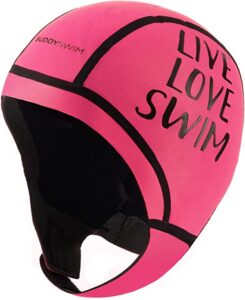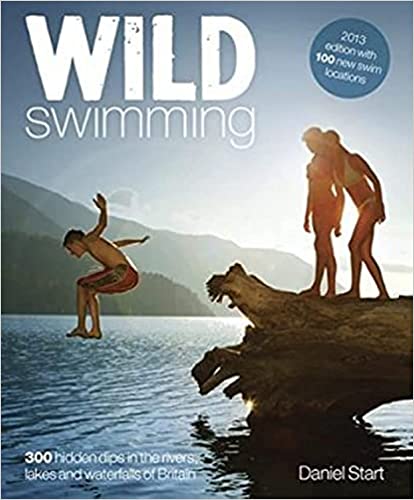Wild swimming has increased in popularity in recent years, and in fact it provides many benefits for health and well-being. Now, if the thought of participating throughout the year and suffering a winter swim sounds daunting, then the upcoming spring and summer seasons may be a great way to dip your toe into the water (sorry for the pun). This enjoyable activity also gives you a chance to see nature from a different angle and perspective.
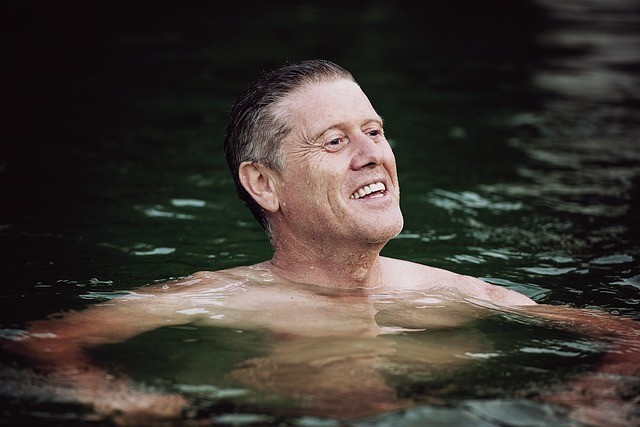
This guide will go over the basics of wild swimming, as well as cover important safety factors to keep you as safe as possible throughout. There will also be pointers on organisations and books to give you an idea of places to visit and aid your journey into this ever increasing community.
What is Wild Swimming?
Wild swimming is exactly what it sounds like, swimming out in nature, such as in rivers, lakes, ponds, estuaries, quarries or if you are lucky enough to live by the coast, the sea. Wild swimming feels that little bit more adventurous, a little scary and quite possibly a little naughty compared to a typical bricks and mortar pool. Just you entering a natural waterway, with your skin open to the elements, allows you to experience it all with minimal costs.
A wetsuit is always an option for those who can’t cope with the colder seasons (or as a gentle way to start at the beginning), but the benefits of cold water exposure goes right back to the dawn of time. Being in cold water is invigorating, and has major health and well-being benefits.
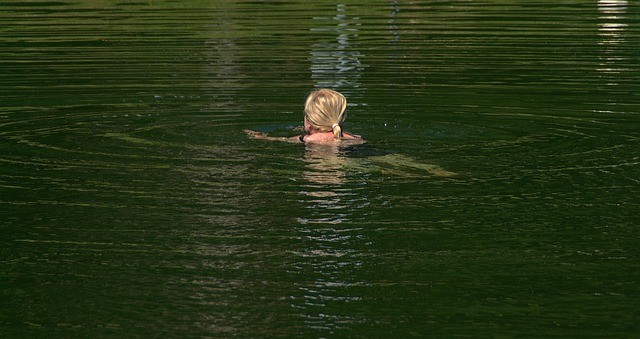
Health Benefits of Cold Water Swimming
The health benefits of cold water swimming were well known to past icons like Charles Dickens and also Florence Nightingale. Today, lots of sports people also use cold plunge pools, helping them to recover after a good workout session.
Here’s why cold water is good for the body:
- Cold water creates intense vasodilation and as a result, brings fresh blood to the extremities and pumping out lactates from the muscles, which is a plus for the body as a whole.
- Cold water boosts the libido.
- Improves the immune system (tested by NASA in the 1980’s).
- Burns extra calories.
- Tones muscles.
- Produces a strong endorphin release that gives a natural high and an intense feeling of euphoria – not bad for a gentle dip in your local area!
Ask anyone who wild swims and they will immediately sing its praises as a way to de-stress from the hectic world. It also brings people closer to nature and into the moment, in a form similar to mindfulness or meditation practices.
Water quality has never been greater than it is now. The old days of heavily polluted rivers are in the past. So, why not join the other creatures enjoying the water and share these wonderful natural parts of the planet? Maybe now is the time to de-stress your mind and body, and get fit in a natural way. Say goodbye public pools with its vats of chlorine, and hello to the great outdoors.
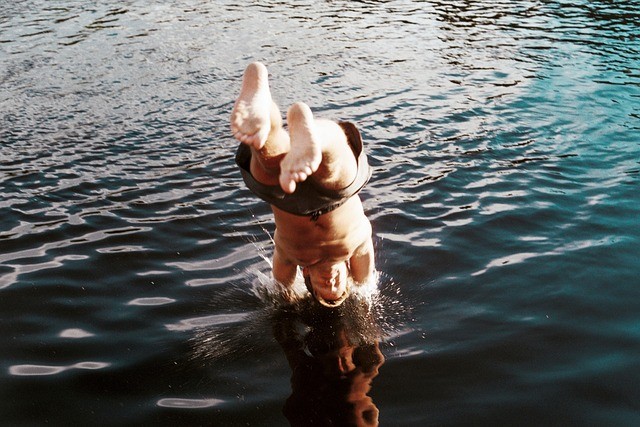
Is Wild Swimming Safe?
Wild swimming is a fun way to get fit, but there are some potential risks to consider. A few basic precautions ensure a safe and enjoyable time for all. Many deaths and injuries over the years could have been potentially avoided by following some basic guidelines and safety measures.
Open Water Swimming Safety Tips:
- Make sure you are a competent swimmer. You need to be able to swim well enough in a current if there is one. If there is a river or waterway with a current, first throw in a small twig or leaves and assess the flow rate. Never swim in fast or flooded rivers at any time.
- Never swim in canals, urban rivers, heavily reeded shallows or stagnant lakes. The water quality could cause skin irritations or make you sick. Be cautious of water quality at times of drought when the pollution levels could be higher. Always avoid areas with Blue-Green algae.
- Gauge the depth. Never jump or dive in, even if you are returning to a frequent particular spot. Rivers and other waterways can sometimes move branches, rocks or rubbish that could be unseen. Lower yourself in and check the depth from the water level, not the bank.
- Never swim alone. Make sure you can be seen if you get into trouble. Keep an eye out for your other swimmers at all times too. Having a friend with you will minimise your risks and make your swim that much more enjoyable too.
- Keep cuts and wounds covered. Use waterproof plasters to reduce your risks of infection, if you are concerned.
- Build cold water exposure regularly and systematically. Carry your spring or summer swimming into autumn, and gradually expose yourself to cooler temperatures as you go. Avoid taking a large break in autumn and then exposing yourself to the harsh cold of deep winter. Instead, let your body acclimatise. If you are new to cold water exposure, lower yourself in gradually to reduce a sudden shock that could be serious for those with cardiovascular conditions.
- Don’t get too cold. Hypothermia comes on gradually. If you feel yourself getting foggy headed, excessively tired, or your teeth start chattering, get out. Dry off and get some warm clothes on. Neoprene wetsuits, gloves and booties can reduce coldness and help you stay in for longer, so something to consider if you want to swim in cooler waters. Regular short dips are always favourable.
- Have an escape plan. Always make sure you know how you are going to get out before you get in. River banks can be slippery and hard to get out of in certain locations. Watch out for Giant Hogweed, a known irritant plant on many river banks. Use well known locations that are wild swimming hotspots, especially at the start. Watch out for slippery rocks too.
- Wear a colourful swimming hat and inflatable tow float, especially if swimming in locations where there is boat traffic. Remember, they are not designed as buoyancy aids.
- Watch out for reeds and weeds. These are not only annoying, but dangerous if thick and dense. Avoid fast thrashing movements and use your arms to slowly and carefully swim out of the area.
- Be careful of cramps if you are prone to them. If you get a leg cramp, shout for help, then lie on your back and paddle to shore.
Where can I go Wild Swimming?
The next thing to consider are places to go wild swimming. In Scotland, due to its right to roam laws, you can swim anywhere you like. It’s a bit more complicated in Wales and England as you have to consider that access points to waterways can be owned by land owners or fishing clubs. The water itself is not owned by anyone, so it all comes down to the entry and exit points.
The Canal and River Trust don’t allow swimming in any canals, also any rivers used by boats for navigation.
Luckily, there are websites that list the best wild swimming locations, and some are probably closer than you think. The River and Lake Swimming Association has an excellent list of locations, rated by user reports. They also list locations with disability access, as well as what potential risks are near.
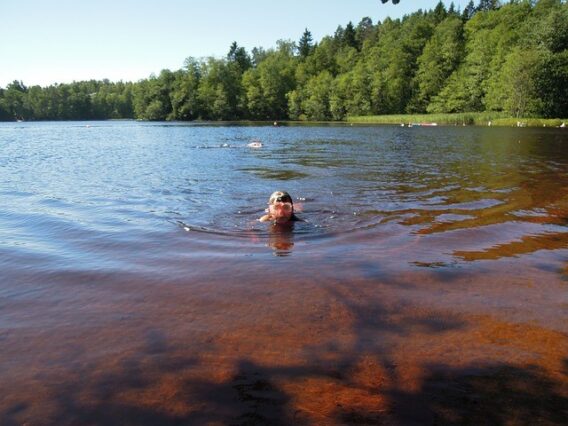
What do I need to start Wild Swimming?
The list of equipment for wild swimming can be as comprehensive or basic as you like, from starting off in a swimming costume, trunks and a t-shirt, right up to neoprene wetsuits.
A good pair of goggles will protect your eyes and give better views of what’s below. A pair of Neoprene socks or boots are useful as it can get a bit rocky underfoot at times. Finally, some good earplugs will be a benefit, as swimmer’s ear is definitely a thing.
A brightly coloured swimming hat helps you be visible to others, and a tow float can be a plus too (it also gives you somewhere to store your car keys safely when on a swim).
Wild Swimming Books
If you want to look further into the hobby than this article can cover, here is an amazing book on wild swimming.
Wild Swimming- Daniel Start
The completely updated and expanded second edition of the popular Wild Swimming photo guide now features 300 brand-new, incredible wild swimming locations. This includes coverage of the South-East and the Midlands, info for children and families, and suggestions for pubs, campsites, boat trips, and weekends.
The book also gives you and ratings on wild swimming access and safety. This updated and expanded version of Wild Swimming is the go-to resource for outdoor swimming in Britain by combining stunning photography with interesting travel writing.
Are you ready to try Outdoor Swimming?
If you like the sound of wild swimming, maybe now is the time to give this exciting activity a try. It’s a perfect way to get fit in a natural environment, in beauty of nature, without the cost of a gym membership. Many wild swimmers praise how this activity has changed their lives, physically, mentally, as well as spiritually, and also how it has given them a whole new lease of life.
Wild swimming is an adventure that’s right on your doorstep. Why not dip a toe in and find out?

